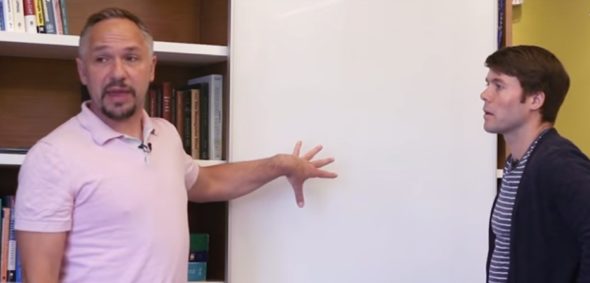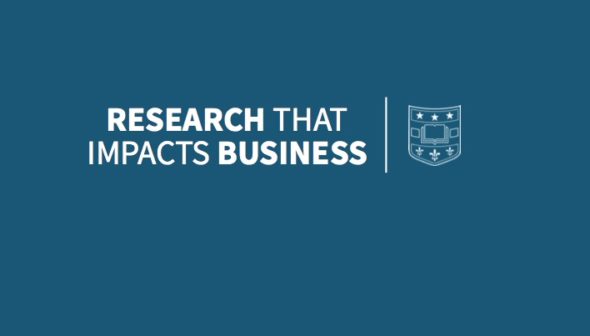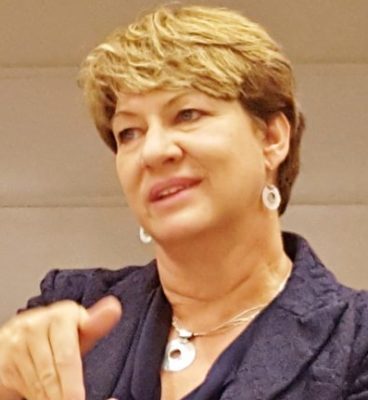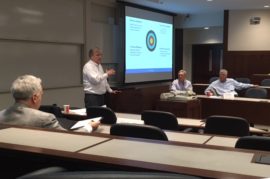One of the biggest challenges aspiring entrepreneurs face is how to build an effective team to advance an early stage venture idea. The lead entrepreneur is not only responsible for assembling a skilled team, but he or she must also strike a delicate balance as guardian of the original idea for the venture while encouraging team members to adopt a sense of ownership and commitment to the project.

Markus Baer and Andrew Knight
Markus Baer and Andrew Knight, associate professors of organizational behavior at Olin, found a unique way to observe the behavior of leaders in the crucial early stages of a venture that, in turn, predict success or failure for the startup. Using a multi method research approach, the professors observed teams participating in entrepreneurship competitions and teams participating in Washington University’s startup launch course, The Hatchery.
Baer and Knight identify three behaviors of successful lead entrepreneurs in the earliest stages of a venture.
- Psychological ownership. A lead entrepreneur must foster a shared sense of ownership among new team members, helping them develop the feeling that the venture idea is “ours.” In the absence of feelings of collective ownership, new team members are unlikely to invest significant time, effort, and energy in the venture—all of which a fledgling business needs to survive and grow.
- Idea marking refers to behaviors that communicate and signal to new team members those aspects of the venture idea that the entrepreneur holds dear and is unwilling to change.
- Help seeking refers to behaviors that encourage and invite new team members to suggest ways to change and improve the venture idea.
If effectively communicated by the lead entrepreneur, behaviors #2 and #3 will provide the clarity needed for team members to develop shared feelings of ownership over the venture idea. When an entrepreneur communicates which aspects of the venture idea are sacred and which are open to change, it creates an optimal environment for success.
The research finds that these behaviors are not mutually exclusive. In fact, it appears leaders must use both directive (idea marking) and participative (help seeking) leadership behaviors in tandem if they want to succeed. When a lead entrepreneur engages in both behaviors, an early stage venture team is likely to prosper, elicit favorable reactions from potential investors, and breed commitment to the future of the venture among new team members. Marking ideas and help seeking behaviors work in concert, with each behavior mitigating the weaknesses of the other; they are important ingredients for startup success.
KEY TAKEAWAYS for Managers
- Lead entrepreneurs need to use both directive and participative leadership. Together, these two approaches provide the clarity needed for team members to develop shared feelings of ownership over the venture idea. When leading a fledging venture, an entrepreneur should communicate which aspects of the venture idea are sacred and also which are open to change.
- When a lead entrepreneur takes a “hands off” approach, conflict erupts, the team performs especially poorly, and people quickly disengage from the venture. When putting together a fledgling venture team, an entrepreneur must take an active role in leading the team.
- Entrepreneurship programs should teach aspiring entrepreneurs the benefits of using even a short process to resolve ambiguity about team members’ roles and the entrepreneur’s expectations.
 This research was presented as part of the Olin Research that Impacts Business Series on June 26. The research paper, “Whose idea is it anyway? How lead entrepreneurs foster collective ownership in provisional founding teams,” is currently under review and is authored by Professors Baer and Knight and their former student Steven Gray, (Olin PhD graduate, May 2017), who is currently an Assistant Professor of Organizational Behavior, McCombs School of Business, University of Texas, Austin.
This research was presented as part of the Olin Research that Impacts Business Series on June 26. The research paper, “Whose idea is it anyway? How lead entrepreneurs foster collective ownership in provisional founding teams,” is currently under review and is authored by Professors Baer and Knight and their former student Steven Gray, (Olin PhD graduate, May 2017), who is currently an Assistant Professor of Organizational Behavior, McCombs School of Business, University of Texas, Austin.
Link to more research from Olin faculty.

Dean mark Taylor introduces Markus Baer and Andrew Knight at the recent Research Impacts Business presentation.
Mark your calendar for these upcoming research presentations:
September 12, 2017 – Doing Well by Making Well: The Impact of Corporate Wellness Programs on Employee Productivity
by Lamar Pierce, Associate Professor of Organization & Strategy
November 7, 2017 – Intermediary Asset Pricing: New Evidence from Many Asset Classes
by Asaf Manela, Associate Professor of Finance
January 11, 2018 – The Performance Effects of Organizational Architecture
Mahendra R. Gupta, Former Dean and Geraldine J. and Robert L. Virgil Professor of Accounting and Management
All events will be held in Bauer Hall from 7:30 a.m.–9:00 a.m.
Complimentary breakfast included.















 All three alumni shared their insights on how to prepare for the future.
All three alumni shared their insights on how to prepare for the future. Afterward, John Herber, Chairman, Rubin Brown, who was in attendance, said it was great to get this group together to engage in this kind of dialogue. It is so important, he said, that we think about costs and its impact related to IT needs in the future.
Afterward, John Herber, Chairman, Rubin Brown, who was in attendance, said it was great to get this group together to engage in this kind of dialogue. It is so important, he said, that we think about costs and its impact related to IT needs in the future.